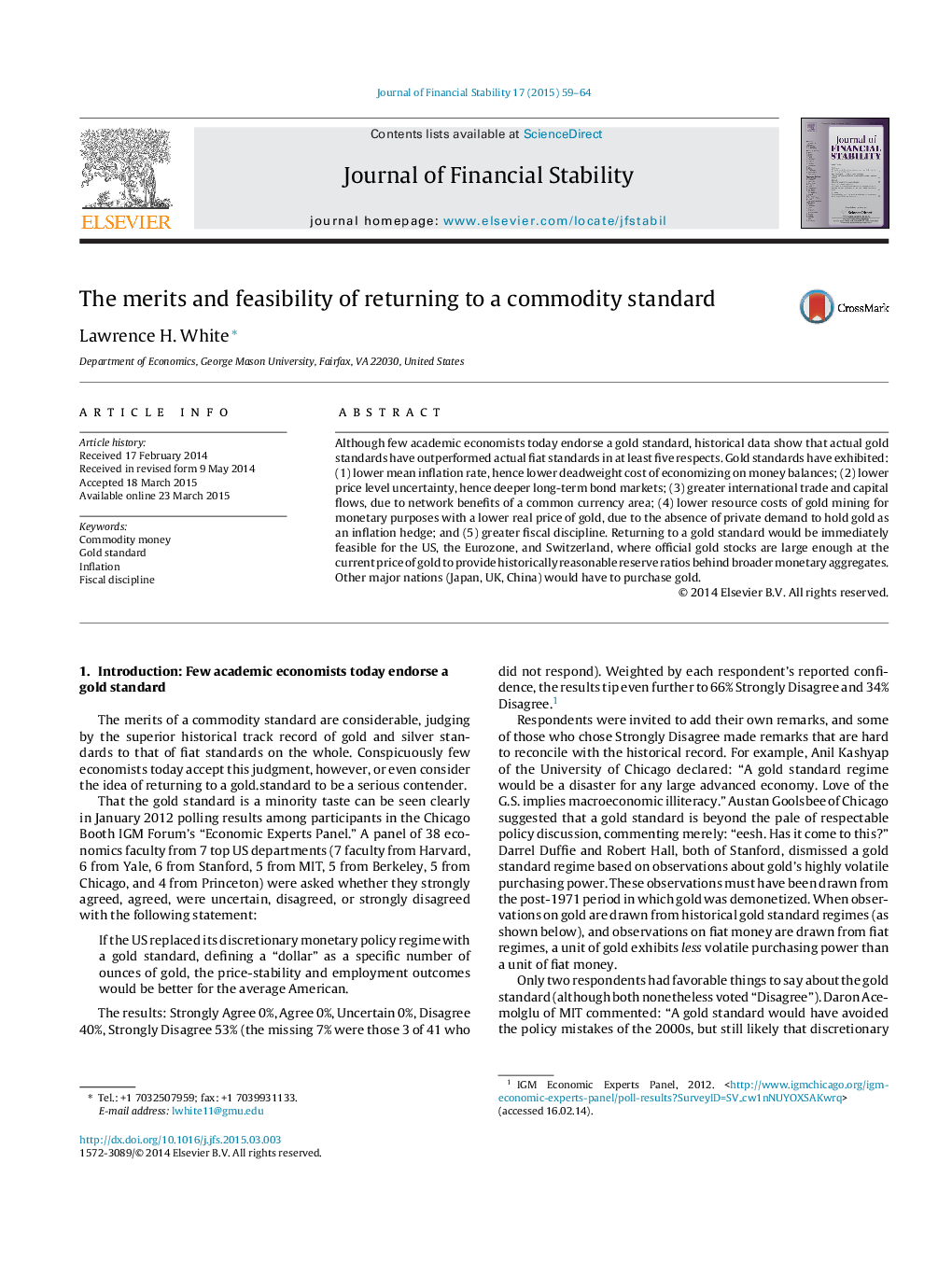| Article ID | Journal | Published Year | Pages | File Type |
|---|---|---|---|---|
| 998958 | Journal of Financial Stability | 2015 | 6 Pages |
•Metallic standards have exhibited less inflation and price level uncertainty than fiat standards.•The real price of gold and hence mining resource costs are lower under gold than under fiat standards.•Leading central banks (US, EU, CHF) currently hold gold stocks large enough to back their M1 stocks.
Although few academic economists today endorse a gold standard, historical data show that actual gold standards have outperformed actual fiat standards in at least five respects. Gold standards have exhibited: (1) lower mean inflation rate, hence lower deadweight cost of economizing on money balances; (2) lower price level uncertainty, hence deeper long-term bond markets; (3) greater international trade and capital flows, due to network benefits of a common currency area; (4) lower resource costs of gold mining for monetary purposes with a lower real price of gold, due to the absence of private demand to hold gold as an inflation hedge; and (5) greater fiscal discipline. Returning to a gold standard would be immediately feasible for the US, the Eurozone, and Switzerland, where official gold stocks are large enough at the current price of gold to provide historically reasonable reserve ratios behind broader monetary aggregates. Other major nations (Japan, UK, China) would have to purchase gold.
